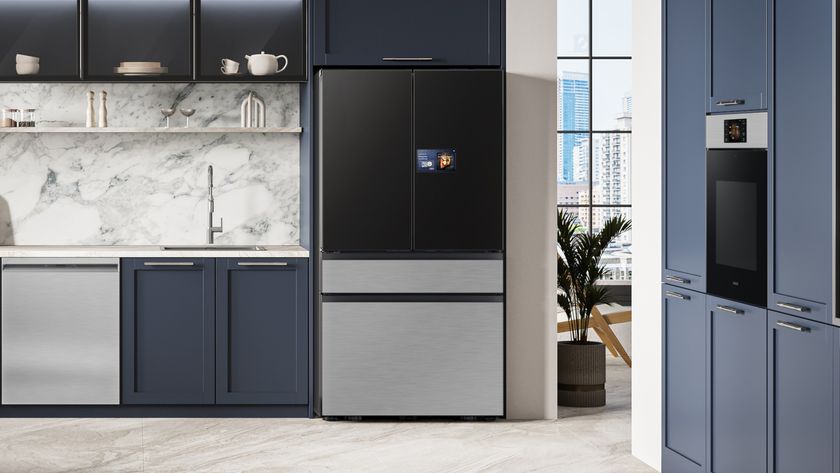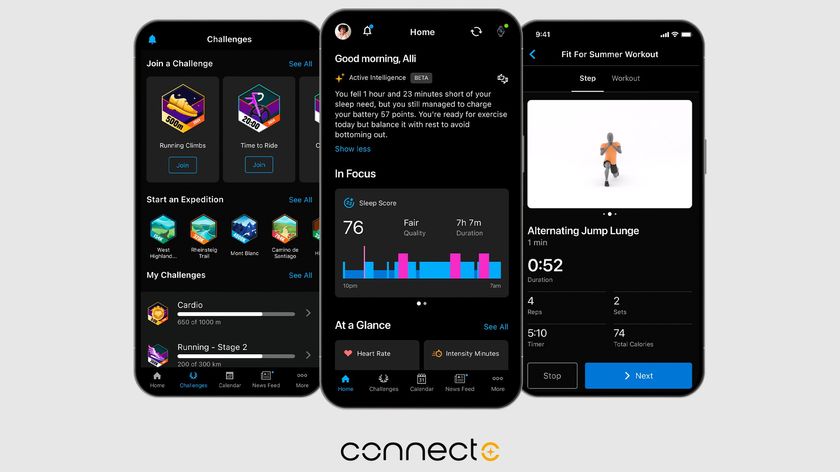Hands on: Asus Eee PC 900
UPDATED: second-generation Eee PC arrives to raise the bar
Edit: Read our full review of the Asus Eee PC 900 here
Even Asus couldn’t have predicted how wildly successful its Eee PC 701 would become. With over a million units sold, the sub-£200 laptop is one of the hottest computing products of the millennium so far. And now, here is its successor: the refined Asus Eee PC 900.
The frustrating and moderately ugly 7-inch 800 x 480 screen of the Eee PC 700 series is gone. And it’s been replaced by a snazzy new screen which measures 8.9-inches and has a resolution of 1024 x 600. It’s much easier on the eye, and looks so much nicer than the original.
Better looking
The Eee PC now looks like a deft sub-notebook, instead of one that has a bit of a decrepit display. And the larger, sexier screen has practical benefits too; the most important being that you no longer have to scroll sideways to view the entire width of most web pages – you had to do that on the original.
But other than the much-improved display, there’s not much else aesthetically different about the 900. The vertical speakers which flanked the original’s screen are obviously gone. But the physical size of the chassis seems pretty much the same. And that’s certainly not a bad thing.
One cool feature that Asus has added is the ability to scroll through web pages using the touchpad, but without the need to press any buttons. If you place two fingers on the touchpad instead of one, instead of moving the cursor, the Eee PC 900 with scroll the page you’re looking at. On the original Eee you could scroll using the right hand side of the touchpad - but this is a step up from that.
Are you a pro? Subscribe to our newsletter
Sign up to the TechRadar Pro newsletter to get all the top news, opinion, features and guidance your business needs to succeed!
More memory
Another obvious, practical improvement is that the 1GB of RAM (instead of 512MB) has made the 900 smoother to operate. And the boosted storage is a blessed relief too. The first Eee PC only had 2/4GB of solid state memory, so 12/20GB now allows you to keep a lot of your personal data on the machine. The operating system no longer fills the majority of the storage space.
You can also still upgrade that storage using the SD-card slot, which means in theory you can expand the memory by another 32GB (although a 32GB SD card will cost you more than the Eee itself).
Underclocked processor
The biggest disappointment of course, is the lack of the Intel Atom processor. We hoped the 900 would come with it built in. But it doesn’t. And as a result it comes with the same underclocked processor that the original Eee PC 700-series came with.
The Atom processor would have made the 900 quicker to operate and would also have been more power efficient. That in turn would have boosted battery life. And even while writing this initial first-look piece, it’s clear that the battery life on the 900 is not hugely better than its predecessor – which is a real disappointment. Add to that that Asus told us that an Atom-sporting Eee will be arriving by the end of the summer, and suddenly the 900 isn't as attractive after all.
In the 30 minutes that we’ve had it for so far, the Eee PC 900 certainly seems a nice successor to the original. But there are also a bunch of niggly little annoyances that make the all-round Eee experience a bit stressful. Add to that the fact that this latest model costs over £320 and suddenly there are some serious questions to be asked.
James was part of the TechRadar editorial team for eight years up until 2015 and now works in a senior position for TR's parent company Future. An experienced Content Director with a demonstrated history of working in the media production industry. Skilled in Search Engine Optimization (SEO), E-commerce Optimization, Journalism, Digital Marketing, and Social Media. James can do it all.












